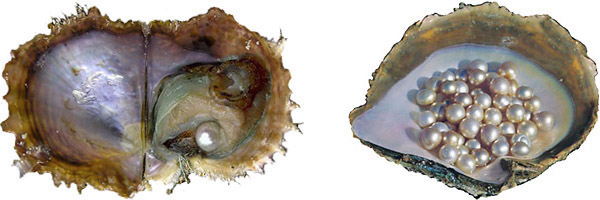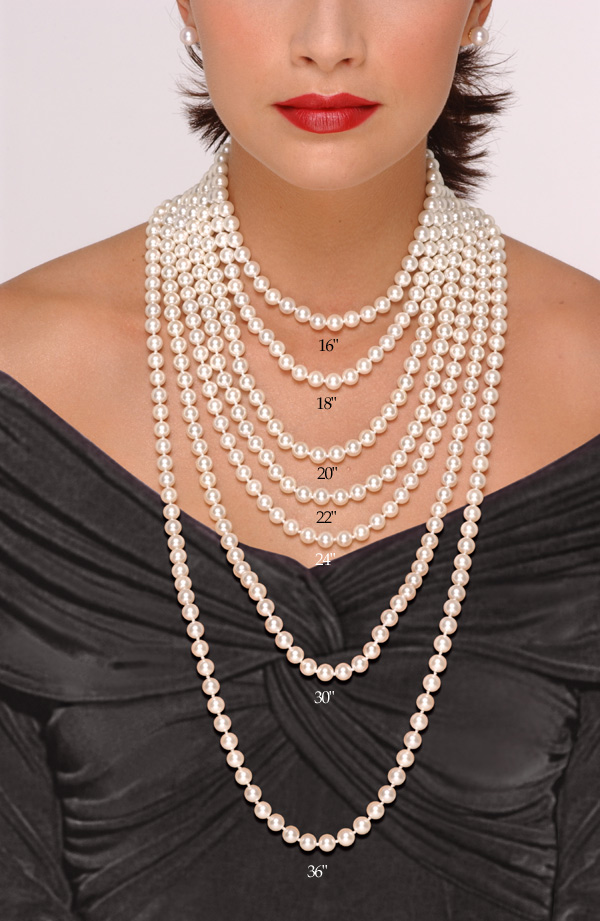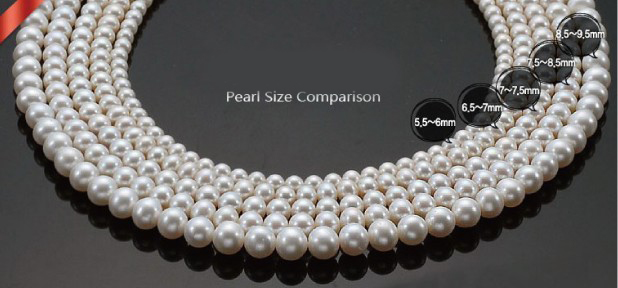What Kind of Pearl Does pearlslover.com Have?
pearlslover.com has wide selections on pearls. Freshwater Pearls, Akoya Saltwater Pearls, Tahitian Pearls, and South Sea pearls.
Freshwater pearl: Freshwater cultured pearls are grown in freshwater rivers and lakes. Freshwater mollusks are nucleated using a piece of mantle tissue only. These pearls are generally less expensive when compared to their saltwater counter parts.
Akoya Saltwater Pearl: Akoya is the Japanese word for Saltwater. Akoya or Saltwater pearl oysters are nucleated using a bead usually prepared from mother-of-pearl. Akoya pearls are typically larger than freshwater pearls. They are also smoother, rounder and have a higher luster than their freshwater counterparts.
South Sea Pearl: South Sea Pearls are prized for their large size, high luster and colors ranging from white and cream, to silver, pink, lavender and gold. Australia, Indonesia, Myanmar (Burma), Papua New Guinea, and the Philippines are the primary geographic regions for the cultivation of South Sea pearls.
Tahitian Pearl: The term "Tahitian pearl" is a somewhat of a misnomer, as this particular pearl variety is not actually from Tahiti. Tahiti is the largest island in French Polynesia, which is located east of Australia, in the South Pacific.
The most valuable "black" pearls have what is known as a "peacock green" overtone or color component.

Man-Made 'Cultured' Pearls
Almost all pearls (Perle French or German, Perla Spanish or Italian) used for jewelry today are "cultured" pearls, meaning that they have been "created" with the assistance of human intervention.
A cultured pearl is formed when a small foreign object or irritant (seed nucleus) is embedded in the tissue of a mollusk or oyster by a "seeding" technician.
By surgically implanting this foreign object or nucleus into the tissue of the mollusk, the pearl farmer can induce the creation of a pearl.
The pearls are usually harvested three to five years after the implanting of the nucleus, but it can take up to six years before a large high-quality pearl is produced.
What Does pearlslover.com Use on Pearl Grading?
1. Luster
2. Shape
3. Color
4. Surface
5. Size
Luster
pearlslover.com Uses The AAA-A Pearl Grading System
This system grades pearls on a scale from AAA to A, with AAA being the highest grade, this grading scale is common to freshwater and akoya pearls only, but is also accepted by many South Sea and Tahitian pearl dealers. The AAA to A grades are as follows:
AAA: Virtually flawless pearl. Surface luster is very high , and 95% of surface will be free from any defect.
AA: The surface will have a very high luster, and at least 75% of the surface will be free from any type of defect.
A: The lowest jewelry-grade pearl, with low surface luster and/or more than 25% of the surface showing defects.

Shape
pearlslover.com has beautiful shape of pearls. We have baroque, off-round and perfect round pearls. Perfect round shape pearls are among our major products.
Baroque is a general term that indicates a significant irregular pearl shape. Typically, these baroque pearls are the least expensive variety, yet certain exotic South-Sea or Tahitian specimens can be more valuable than perfectly round pearls from other regions. The baroque pearl can be abstract (asymmetrical) in its irregular shape, or it can resemble a stick, cross, or any number of other more "symmetrical" shapes.
Button pearls pearlslover.com have can represent the Off-round shape of pearls.
Perfect round is to indicate pearls that are "roundish" to varying degrees, and considered to be "round" as a basic classification.

Color
pearlslover.com selected for our customers the most beautiful colors of pearls in the market.
Pearls come in a wide range of natural colors (hues) and shades (tones), but some pearls are dyed or irradiated to suit a specific fashion trend or requirement.

Surface
As a mollusk creates a pearl, the layers of nacre do not always adhere smoothly. Sometimes spots and bubbles can appear in the layering process.
Pearls with the smoothest surfaces are the highest-quality, most sought-after pearls. At pearlslover.com, to offer you a range of prices, we offer pearls with a range of surface qualities.

Size
Generally speaking, the larger the size of the pearl, the greater its value. Large pearls not only require larger oysters to produce them, but they require much more time to develop inside the oyster, depending on the size of the nucleus.
pearlslover.com offers different sizes of pearls. Of course, the price varies on different size of pearl as well.
Freshwater pearls range in size from about 5.0-12.0mm, Akoya pearls range from 6.0-9.5mm, Tahitian pearls can reach sizes from 8-18mm and south sea pearls are range from 9-18mm.

Pearl Necklace Styles
Choker - Length: 15 to16 inches. Nestles at the base of the neck
Collar - Length: 12 to13 inches. Rests directly against the throat - can be multiple strands
Princess - Length: 18 to19 inches. Comes down to or just below the collarbone
Matinee - Length: 20 to 24 inches. Falls just above the breasts
Opera - Length: 28 to 36 inches. Long enough to reach the breastbone or sternum
Rope - Length: 40 inches and over. Any length that falls down further than an opera


